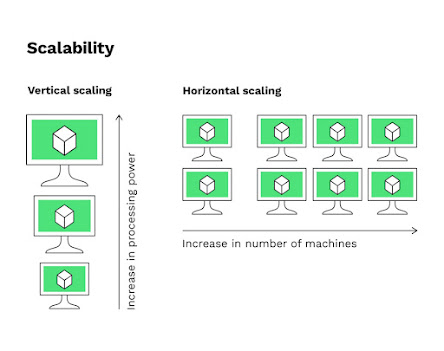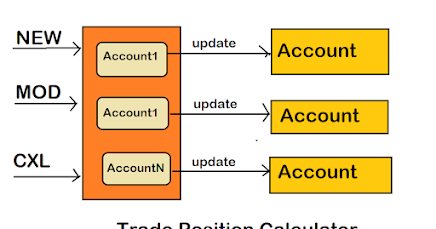System Design interview just like other interviews, require you to be up to the task. This means that you have to adequately prepare so that you can have an easy time when going for that interview.
Answer: System Design is a process of defining the elements of a system such as the modules, components, various interfaces and architecture.
2. How do you design a web crawler? (solution]
Answer: A web crawler service collects information/crawl from the entire internet and fetches millions of web documents. Things to keep in mind while designing a web crawler are:
- The approach is taken to find new web pages
- The approach to prioritize web pages that can change in a dynamic way
- To ensure that the web crawler service is bounded on the same domain
3. What are the three important skills of system designer?
Answer:
- Good knowledge of Computer Fundamentals
- Familiar with API Integration
- User interaction
- Familiar with how to deploy and scale systems
4. Which is the primary tool used for structured Design?
Answer: Structure charts is a primary tool used for structured Design.
6. In System Design process, what is Requirements Determination?
Answer: A requirement is most important for a new system which includes processing or capturing of data, controlling the activities of a business, producing information and supporting the management. Requirement determination helps you to study the existing system and to gather details to find out what are the requirements, how it works, and what kind of improvements should be made.
If you like their teaching style, I also recommend you to checkout their System Design Interview Bundle where they share their best System design courses for discount.
8. How can you design autocomplete functionality?
Answer: Here are important things for developing autocomplete functionality:
- Typeahead suggestion to be provided.
- Queries per second handled by the system.
- Support personalization with the suggestions.
- Amount of data to be stored.
9. In the system design process, where is problem analysis done?
Answer: Problem analysis is done at the systems analysis phase.
9. What are the Types of Documentation in System Design?
Answer: Four types of documentation are:
- Program documentation
- System documentation
- Operations documentation
- User documentation
10. How is Horizontal scaling different from Vertical scaling?
Answer:
- Horizontal scaling refers to the addition of more computing machines to the network that shares the processing and memory workload across a distributed network of devices. In simple words, more instances of servers are added to the existing pool and the traffic load is distributed across these devices in an efficient manner.
- Vertical scaling refers to the concept of upgrading the resource capacity such as increasing RAM, adding efficient processors etc of a single machine or switching to a new machine with more capacity. The capability of the server can be enhanced without the need for code manipulation.
11. What do you understand by load balancing? Why is it important in system design?
Answer:
Load balancing refers to the concept of distributing incoming traffic
efficiently across a group of various backend servers.
These servers are called server pools. Modern-day websites are designed to serve millions of requests from clients and return the responses in a fast and reliable manner. In order to serve these requests, the addition of more servers is required.
In such a scenario, it is essential to distribute request traffic efficiently across each server so that they do not face undue loads.
Load balancer acts as a traffic police cop facing the requests and routes them across the available servers in a way that not a single server is overwhelmed which could possibly degrade the application performance.
12. What is Sharding? (Answer)
Answer:
Sharding is a process of splitting the large logical dataset into
multiple databases. It also refers to horizontal partitioning of data as
it will be stored on multiple machines.
By doing so, a sharded database becomes capable of handling more requests than a single large machine.
Consider an example - in the following image, assume that we have around
1TB of data present in the database, when we perform sharding, we
divide the large 1TB data into smaller chunks of 256GB into partitions
called shards.
13. What are the various Consistency patterns available in system design?
Answer:
- Consistency from the CAP theorem states that every read request should get the most recently written data. When there are multiple data copies available, there arises a problem of synchronizing them so that the clients get fresh data consistently. Following are the consistency patterns available:
- Weak consistency: After a data write, the read request may or may not be able to get the new data. This type of consistency works well in real-time use cases like VoIP, video chat, real-time multiplayer games etc. For example, when we are on a phone call, if we lose network for a few seconds, then we lose information about what was spoken during that time.
- Eventual consistency: Post data write, the reads will eventually see the latest data within milliseconds. Here, the data is replicated asynchronously. These are seen in DNS and email systems. This works well in highly available systems.
- Strong consistency: After a data write, the subsequent reads will see the latest data. Here, the data is replicated synchronously. This is seen in RDBMS and file systems and are suitable in systems requiring transactions of data.
Answer: System Study has three most important aspects which are as follows:
- Identifying current issues and establishing new goals.
- Study of an existing system.
- Documenting the existing system.
15. As a system designer, how you can design a universal file sharing and storage apps like Google Drive or Dropbox?
Answer: The above mention apps are used to store and share files, photos, and other media. We can design things like allowing users to upload/search/view files or photos. It checks permissions for file sharing and enables multiple users to make changes in the same document.
16. What feature allows one class to derive features from another class?
Answer: The Inheritance feature allows one class to derive features from another class. But more often than not you should use Composition to reuse code from another class instead of Inheritance.
Composition is flexible than Inheritance and there are many benefits of using Composition like easier to test. You can also see my post 5 Reasons to choose Composition over Inheritance for more details.
17. Which language was the first language to be developed as a purely object-oriented programming language?
Answer: Smalltalk was the first programming language to be developed as a purely object-oriented programming language. While there are many great programming language which support OOP like Java, C++, JavaScript, Python, and C#, none of them are pure object oriented programming language, if you think wearing a purist shoes.
18. How do you design a Trade position aggregator or Portfolio Manager?
You need to design a system which can accept Trade and then shows the position for each symbol, much like a Portfolio Manager.
Your system needs to support multiple symbols and it should be fast enough to calculate position in real time.
In order to test your system, you can input a set of trades, both buy and sell side and then query the system to see the live position.
You can first try solving this problem yourself but if you stuck you can see my solution of implementing Trade position aggregator in Java for guidance.
19. Which is an OOPs language but does not support all inheritance types?
Answer: Java is an OOPS programming language, but it does not support all inheritance types.
20. Name different types of constructors in C++ ?
Answer: There are three types of constructors in C++, which are as follows:
- Default Constructors: It does not take any argument and has zero parameters.
- Parameterized Constructors: These types of constructors take some argument.
- Copy Constructors: It is a member function, and its basic function is to initialize the object using another object of the same class.
21. What is RAID?
Answer:
RAID stands for a redundant array of independent disks. RAID is the
technology that specializes in data storage that combines various
physical disk drive components within one or numerous logical units as
data redundancy and performance improvement.
22. How do you design a Vending Machine in Java?
This is a common object oriented analysis and design question which is also asked on System design interview.
You need to design a Vending Machine which can vend a couple of products like Coke, Biscuits, Chocolates, and Cake. It can accept coins (Nickle, Dime, Pence, and Cent), and small denomination notes
There are multiple ways to solve this problem but solution using State Design Pattern is the simplest one. You can try yourself but if you stuck you can also see my post How to design Vending Machine in Java for step by step solution of this OOP Design problem.
Answer: A Java application cannot be created without implementing the OOPs concept. Java applications are completely based on the Object-oriented programming concept.
That's all about System Design Interview Questions and Answers for Coding Interviews. You will surely do better in your interview if you have mastered all the questions with answers in this article. That is the best thing you can do to yourself because this interview is about to change your life in some way. Just be ready for that day and you will see for yourself that everything can be easy and perfect if you do nothing but prepare.
- 5 OOP Design Interview Questions You Must Practice
- 12 SQL Query Interview questions with solutions
- 20 Software Design and Pattern Questions from Interviews
- Is Exponent System Design course really worth it?
- 25 Recursion Interview questions with answers
- 30 JavaScript Interview Questions with Answers
- Is Codemia.io worth it for System Design Interview Prep?
- 100+ System Design Problems for Interviews
- 130+ Java Interview Questions with Answers
- 40+ Object-Oriented Programming Questions with Answers
- 50 SQL and Database Interview Questions for Beginners
- 20 Algorithms Interview Questions for Software Developers
- 20+ Spring Boot Interview Questions with Answers
- 20 JUnit Interview Questions with Answers
- 35 Python Interview Questions for 1 to 2 years experienced
P. S. - If you struggle to solve System Design Questions then I highly recommend you to go through a comprehensive System Design course like Grokking the System Design Interview course on Educative to not just learn essential System design concepts but also practice frequently asked System Design Problems.

















2 comments :
Article as far away from “system design” as possible.
This is mean to be an introductry set of questiosn instead of deep diving into each System design problem as that could make the article quite long. I tried to cover System design concepts instead of solving the problem but as you are saying may be there is a scope to improve this article. Which topics you would like to be added into this list?
Does SQL vs NoSQL?
Microservice vs Monolithic?
Kind of discussion you were expected in this article?
Post a Comment